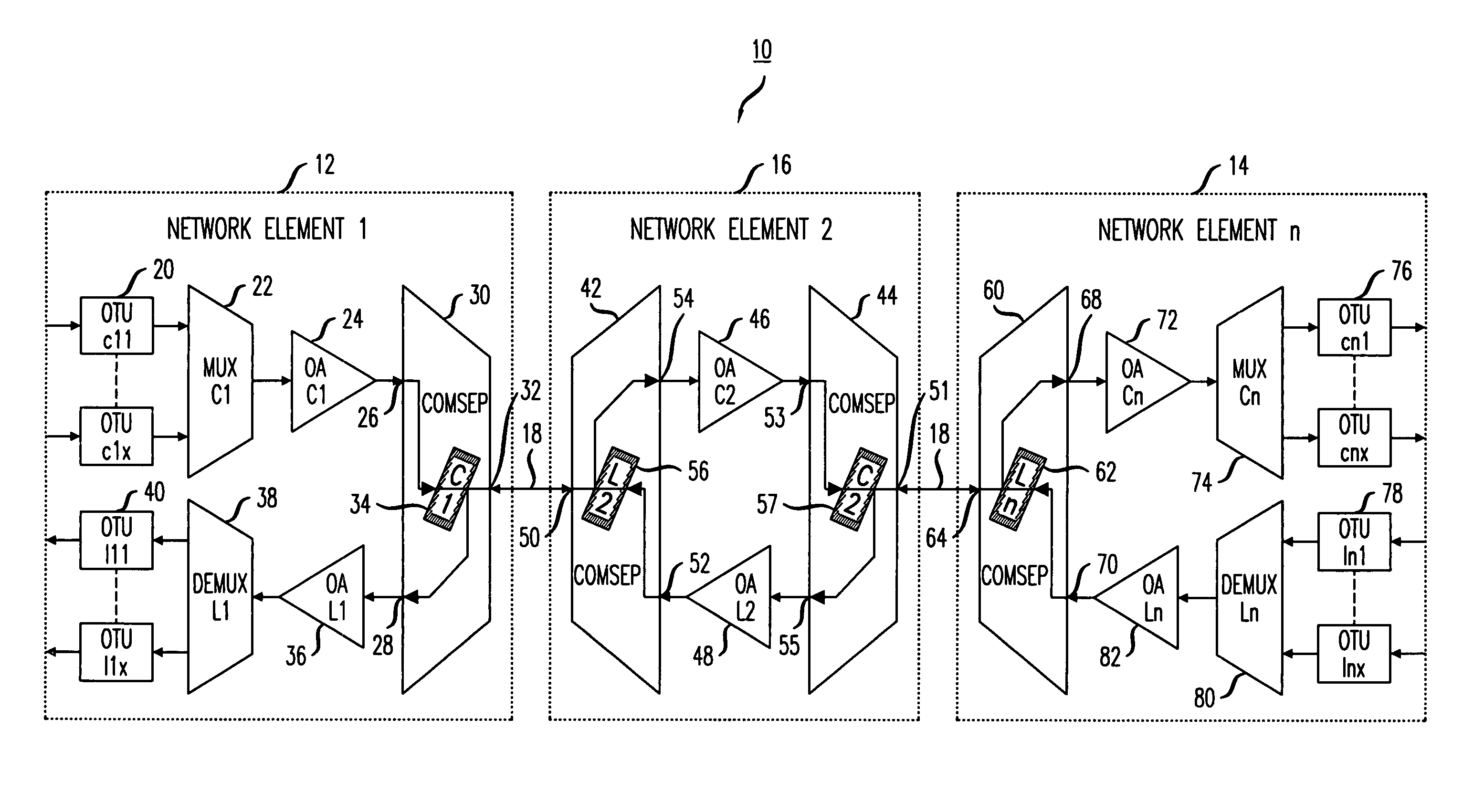Bi-directional optical transmission using dual channel bands
a dual-channel band, optical transmission technology, applied in the field of optical communication systems, can solve the problem of relatively large overall signal loss of multiple filters, and achieve the effect of minimizing signal separation loss, maximizing the optical performance of the overall system, and significantly reducing insertion loss
- Summary
- Abstract
- Description
- Claims
- Application Information
AI Technical Summary
Benefits of technology
Problems solved by technology
Method used
Image
Examples
Embodiment Construction
[0008]Referring to FIG. 1, there is shown one exemplary embodiment of a bi-directional fiber transmission system 10 in accordance with the present invention. The system 10 provides transport of x channels between a first end node 12 and a second end node 14 at different locations. An intermediate node, or a repeater node 16, is shown coupled between the first and second end node 12, 14. It would be understood that any number of intermediate nodes can be coupled in the signal path between the two end nodes in order to maintain appropriate optical transmission levels. Accordingly, a complete bi-directional fiber transmission system includes a total of n nodes. It would also be understood that intermediate nodes may be more than just repeater type nodes and can include pairs of end nodes as well as optical add and drop nodes. In principal, end nodes 12, 14 could be located in the same office and the traffic (structure) connected between them so as to form a complete ring system and not...
PUM
 Login to View More
Login to View More Abstract
Description
Claims
Application Information
 Login to View More
Login to View More - R&D
- Intellectual Property
- Life Sciences
- Materials
- Tech Scout
- Unparalleled Data Quality
- Higher Quality Content
- 60% Fewer Hallucinations
Browse by: Latest US Patents, China's latest patents, Technical Efficacy Thesaurus, Application Domain, Technology Topic, Popular Technical Reports.
© 2025 PatSnap. All rights reserved.Legal|Privacy policy|Modern Slavery Act Transparency Statement|Sitemap|About US| Contact US: help@patsnap.com


